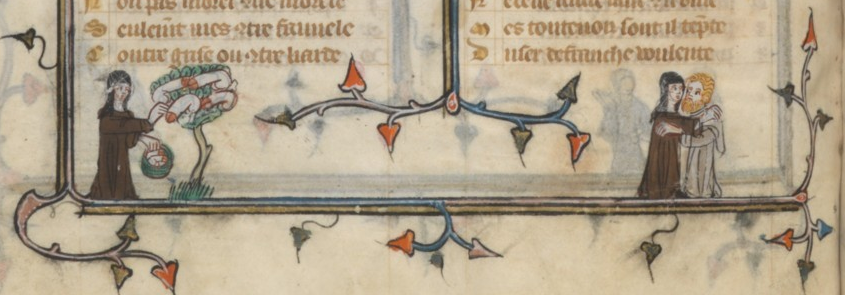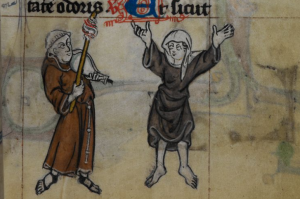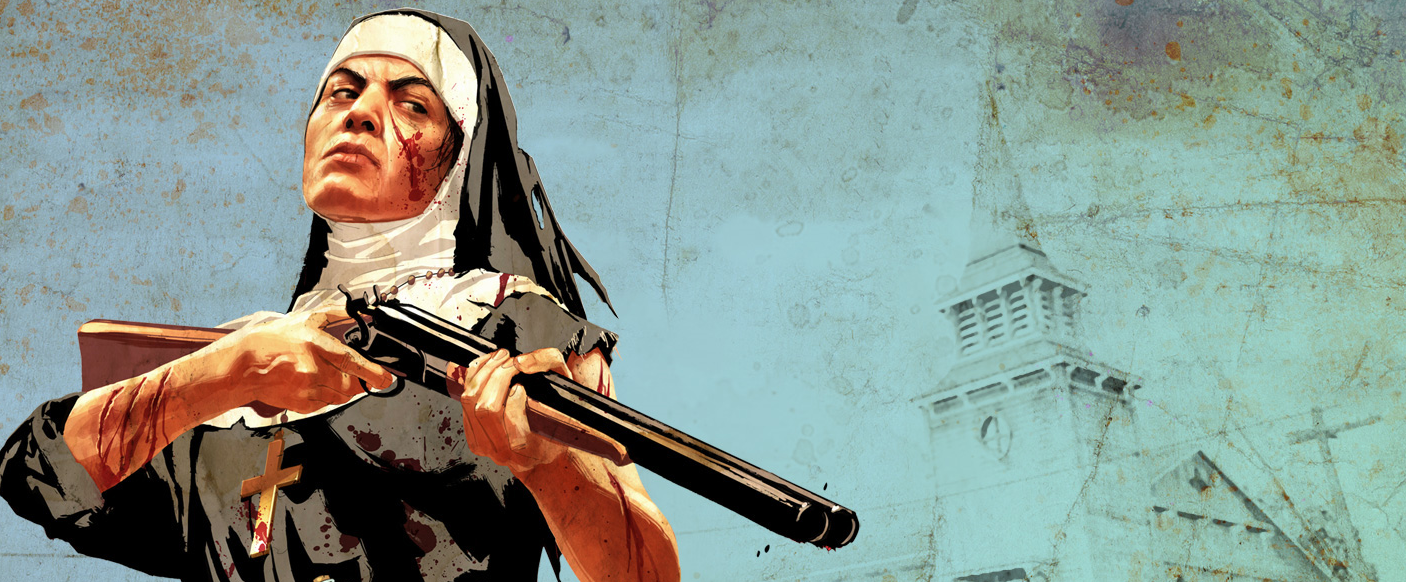Sex sells, particularly when it comes with a side order of subversion. It’s no surprise, then, to find that recently released The Nun (2018) has attracted a little more press attention than is the norm for a schlocky horror film. The movie bids fair to tick off a lot of boxes in the “nunsploitation” sub-genre of horror: beautiful young nuns, a remote and gloomily Gothic convent, blood spitting, demonic possession. You know, the usual.
Syfy took a look at the history of evil nuns on film from the silent movie period onwards, and touched on the involvement of female religious with some real life atrocities like those committed over the course of many decades at the home for unmarried mothers run by the Bon Secours Sisters in Tuam, Ireland. The New York Times broke down the techniques the director used to scare the audience in one particular scene. Even NPR got in on the fun, exploring how the evil nun is “one of the scariest and blood-chilling [sic] of horror tropes that has tormented moviegoers, television viewers and even readers of literary fiction for centuries.”
But what most of these takes omitted (or even in the case of NPR, bungled just a bit) is the long history of how the trope of the evil or immoral nun has been used as a cudgel with which to beat religious women. People feared, lampooned, and slandered nuns long before the thirteenth century—and long after—in part because of a engrained misogyny which continues to shape how we view the past. Other historians noted the same thing.
Uh, NPR? “Scholars trace the trope to the 13th century. Geoffrey Chaucer’s CT shocked & titillated readers with Madame Eglantine, a fat, hypocritical & corrupt nun…she was the first nun — supposedly pure, innocent and holy — to be turned on her head.” https://t.co/N0decRyjwh
— Kathleen E. Kennedy (@TheMedievalDrK) September 8, 2018
Nuns, of course, are people, and people are flawed and capable of doing terrible things. Some nuns undoubtedly inflicted real life horrors on others, like the seventeenth-century abbess Benedetta Carlini, who emotionally and sexually abused women who were in her charge in a monastery in the Italian city of Pescia while claiming that she was possessed by a male demon called Splenditello. But the cases of many other “evil nuns” are far less clear-cut—or rather, the fact that they dovetail so neatly with many misogynistic medieval tropes should make us suspicious.
Misogyny was a remarkably uniform aspect of various medieval societies: in many times and places, women’s supposed insatiable lust, venality, fickleness, and passivity were held up as justification for women’s inferior social and legal positions relative to men. While the respect accorded to nuns because of their virginity, their vows, and their self-dedication to a life of prayer helped to shield them from some of this venom, it couldn’t entirely insulate them.

Charges of sexual immorality were perhaps the most common ones laid against “wicked” nuns in the Middle Ages, and the ones which have most often captured modern attention. (Let’s just say that many “nun-sploitation” movies don’t receive an adult film classification simply because they contain scenes of violence.) During the annual visitation—or formal inspection—of monasteries, church officials were often keen to root out instances of sexual misconduct. Many earlier historians, like Eileen Power in the 1920s, took the records of these visitations at face value and used them to build narratives of medieval nunneries as hotbeds of decadence and vice. In community after community, nuns embezzled, mismanaged property, pawned chalics, and got into plait-pulling brawls in the middle of church. One Margaret Wavere, prioress of Catesby in the mid-fifteenth century, was even caught in flagrante delicto with the local parish priest by another nun.
These examples can easily be multiplied. In the late thirteenth century, the bishop of Zamora interrogated the sisters of the Spanish convent of Las Dueñas and charged them with fornicating with friars at the convent gates, giving their prioress the evil eye, threatening to beat the bishop himself with sticks, and other kinds of general mayhem. At around the same time, Pope Gregory X deposed Henri, bishop of Liège, for taking not just one but many nuns as his “public concubine[s].” In Renaissance Venice, one nun called Laura Querini fell in love with a man twenty years her junior and worked with another nun for more than a month to break a hole in the outer wall of a storeroom in her convent so that their lovers could get in. At her trial, Laura attested that “the two men came in a boat, and put a plank across. We unblocked the hole, and they entered through it, and they stayed with us for two or three hours, while they had intercourse with us”.

But there’s an obvious problem with building a picture of medieval nuns using visitation records or other legal accounts. Even if none of the officials involved was anything other than an objective and impartial investigator, each was bound to spend his time looking into cases of suspected sin instead of reporting on those living blameless lives. Just as skewed perceptions of crime rates lead people to believe that the world outside their door is much more dangerous than it actually is, the “wicked” nuns continue to mislead people into thinking that the majority of medieval women religious were engaged in lives of immoral hypocrisy. Yet recent research has helped scholars to develop a more nuanced view of the lives of medieval nuns, and new analysis of visitation records from France and England has shown that perhaps 3-4% of all monastic women were ever accused of sexual misconduct and that the overwhelming majority kept their vows.
This may be one of those times when the truth is actually less strange than the fiction—or at least, is the source of fewer good jump scares.
